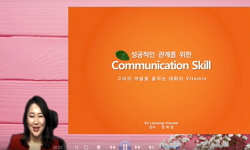Critics noted that visual techniques used in film media were applied to Park Tae-wons novel Scenes of Cheonggyechoen Stream. Considering that movies are a genre that caters to not only sight but also hearing, this paper intends to explore the auditory...
http://chineseinput.net/에서 pinyin(병음)방식으로 중국어를 변환할 수 있습니다.
변환된 중국어를 복사하여 사용하시면 됩니다.
- 中文 을 입력하시려면 zhongwen을 입력하시고 space를누르시면됩니다.
- 北京 을 입력하시려면 beijing을 입력하시고 space를 누르시면 됩니다.
https://www.riss.kr/link?id=A108916409
- 저자
- 발행기관
- 학술지명
- 권호사항
-
발행연도
2023
-
작성언어
Korean
-
주제어
청각적 기법 ; 대화 ; 변사의 목소리 ; 신파 ; 언어적 표현 ; auditory technique ; dialogue ; narration of Byeon-Sa ; Shinpa ; linguistic expression
-
KDC
001
-
등재정보
KCI등재
-
자료형태
학술저널
-
수록면
147-167(21쪽)
- 제공처
-
0
상세조회 -
0
다운로드
부가정보
다국어 초록 (Multilingual Abstract)
Critics noted that visual techniques used in film media were applied to Park Tae-wons novel Scenes of Cheonggyechoen Stream. Considering that movies are a genre that caters to not only sight but also hearing, this paper intends to explore the auditory method of Scenes of Cheonggyechoen Stream. It is a dialogue that mainly leads the narrative of the novel. Park Tae-won expresses it close to actual speech through commas, word lines, and repeated use of words in the conversation. Such representation stimulates readers hearing and induces a reaction. The narrator like Cheongisu (storyteller) of a classic novel or appears in this novel, actively explains the work to have the effect of telling a story. The narrator reminds readers of the narration of Byeon-sa. The background of another auditory method is Shinpa. Love and sadness are important emotions that form Shinpa. The linguistic expressions used on stage to convey such emotions include the expression of physical behavior, the mobilization of onomatopoeia, and mimic words, and it can be seen that such linguistic expressions were also used in the novel.
동일학술지(권/호) 다른 논문
-
자연과학적 지식을 품은 거대 사회이론 : 니클라스 루만의 『사회적 체계들: 일반이론의 개요』(1984) 서평
- 인천대학교 인문학연구소
- 노진철
- 2023
- KCI등재
-
수산물 가공업을 지탱한 여성의 노동 : 한창훈의 『홍합』을 중심으로
- 인천대학교 인문학연구소
- 신민희
- 2023
- KCI등재
-
- 인천대학교 인문학연구소
- 김보람
- 2023
- KCI등재
-
유토피아 공간의 (불)가능성 : 김훈의 『黑山』을 중심으로
- 인천대학교 인문학연구소
- 우현주
- 2023
- KCI등재





 DBpia
DBpia






